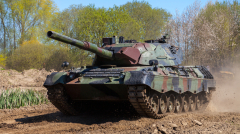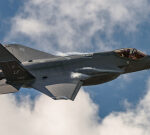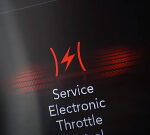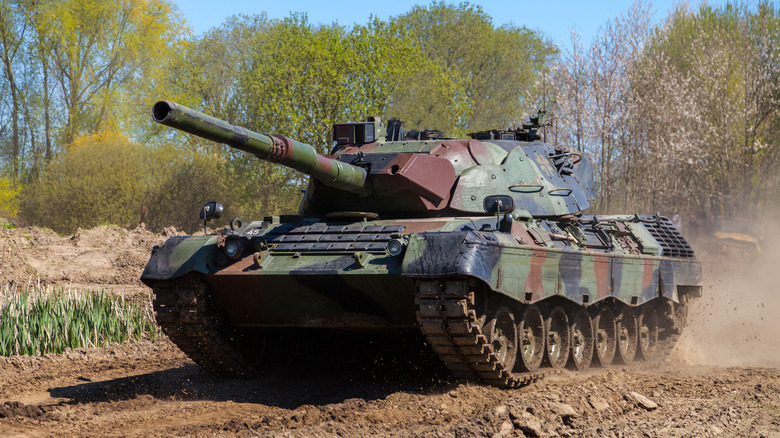
Huettenhoelscher/Getty Images
While modern warfare has changed dramatically since the days that tanks were first introduced in the early 1900s, the armored vehicle still plays a hugely important role in combat. Whether as a defensive deterrent or a sophisticated piece of attacking hardware, the main battle tank is a force to be reckoned with and can perform a vast array of functions on the battlefield. Even with today’s advancement in drone technology and artificial intelligence, more than 100 years of development and refinement have created hugely impressive tanks.
The main battle tanks that most people are familiar with are a fine balance between firepower, mobility, and defensive prowess that use some of the most high-tech parts on the planet. They can take decades to research and develop, costing manufacturers billions to bring them to market. That’s because they often utilize rare, composite materials that provide the best protection against attack and help keep them from being too heavy to move around effectively.
The result of all of that is that today’s tanks are some of the most expensive pieces of equipment that any military purchases for its armies. Out of all the currently available tanks, these are the most costly.
Type 99 – $2.5 million
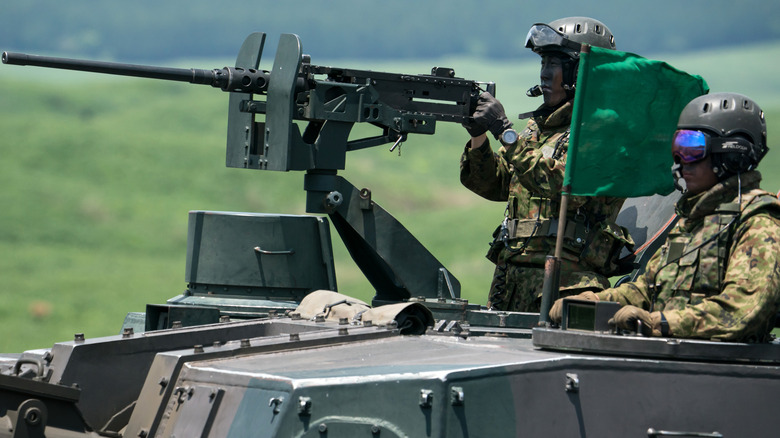
Tomohiro Ohsumi/Getty Images
The Type 99 tank, also known by its designation ZTZ-99, is a Chinese main battle tank that first entered service in 2001. Intended to replace the older Type 88 tanks, it is a third-generation vehicle that now makes up the vast majority of China’s tank forces alongside the Type 96 tank, with over 1,200 units manufactured since production started in 1998. Whether China needs such a large land force, considering that much of its military and expansion efforts are focused on maritime and air superiority, is unclear, but the Type 99 is certainly an impressive tank that is capable of competing with its Russian and American rivals.
Originally based on the older T-72 tank, the current Type 99 has been heavily upgraded and updated in recent years to help make it an effective and vital part of the People’s Liberation Army. The weaponry of the Type 99 tank is now similar to both the Russian T-90 and the U.S.-made M1 Abrams. It also comes equipped with an advanced array of sensors and electronic systems that can help it track enemy tanks, providing accurate data for targeting. In terms of protection, it features composite armor and explosive reactive armor, which aims to damage incoming projectiles as they hit the tank to prevent them from causing major damage.
With a reported cost per unit of $2.5 million, the Type 99 is the most expensive tank in China’s military. It is significantly more expensive than the Type 96, which may explain why the country has produced more than double the number of Type 96 tanks, as it is far more cost-effective, even if not quite as advanced as the Type 99.
Merkava – $3.5 million
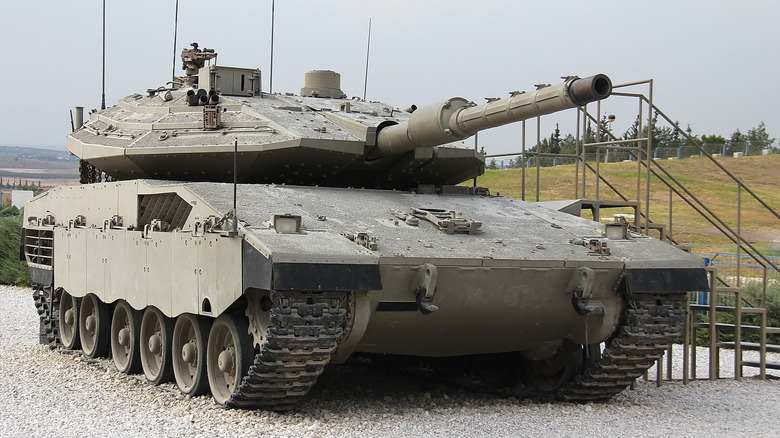
Flik47/Getty Images
The Merkava refers to a whole series of main battle tanks that are used by the Israel Defense Force as part of its Armored Corps. The first of these tanks entered service in 1979, and various upgrades and revisions have been released over the years, with the latest Merkava IV Barak variant first being delivered to the IDF in 2023. It is expected that up to 400 of this model may eventually enter service, replacing the current fleet of Merkava IV tanks.
What makes the Merkava IV Barak stand out is its focus on defense. The Trophy active protection system can shoot down drones, missiles, and other projectiles without any input from the crew, as the system can automatically track and fire at any potential threats. It also comes equipped with composite and modular armor that is tough enough to withstand plenty of punishment and a 120-millimeter smoothbore gun that allows it to hit back with incredible force.
External countries that want to purchase the latest model of the tank, the Merkava IV, are expected to pay in the region of $10 million per unit — a figure that is much higher than the price that Israel produces the tanks for. In 2003, the Israel Defense Force was paying just $3.5 million for each Merkava IV that was delivered to the military, while the most recent Merkava IV Barak costs around the same amount.
T-14 Armata – $3.75 million
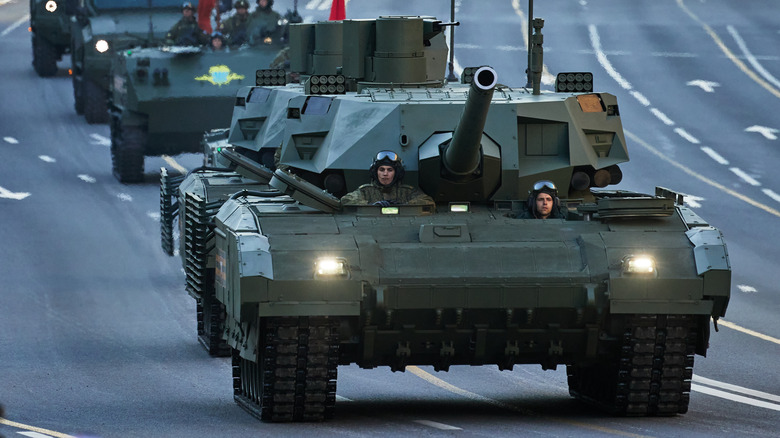
Oleg Nikishin/Getty Images
The T-14 Armata is a Russian main battle tank that weighs 55 tons and comes equipped with a 152-millimeter main gun that fires Vacuum-1 rounds, an Armor-Piercing Fin-Stabilized Discarding Sabot (APFSDS) shell that can penetrate even the strongest armor at ranges of over a mile. The tank also features both a Kord 12.7mm machine gun and a PKTM 7.62mm machine gun, which can be used to combat close-range targets. Largely based on the modular Armata Universal Combat Platform, the T-14 began development in 2014 and several prototypes were created in the run-up to full production beginning in 2021.
The A-85-3A turbocharged diesel engine means the tank can reach a top speed of over 50 miles per hour and has a range greater than 300 miles, making it a maneuverable and agile tank despite its large size and weight. Additionally, the heavy armor made of steel and composite materials offers good protection against incoming fire, while the low silhouette of the vehicle helps ensure it is harder to spot and hit.
Despite a protracted development period and financial issues, the T-14 is a relatively cheap tank compared to many others currently in production. The basic version is expected to cost just $3.75 million per tank, although other variants could reach prices of up to $5 million.
T-90 – $4.5 million
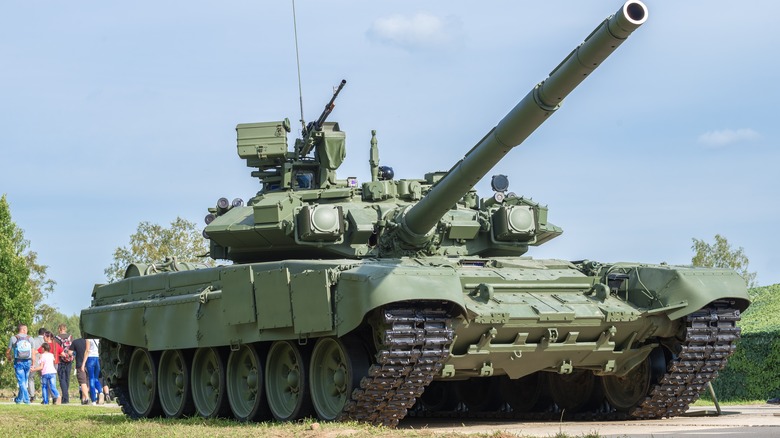
Karasev Viktor/Shutterstock
Designed to replace the aging T-72 tank that first entered active service in 1969, the T-90 is a Russian-made main battle tank. Uralvagonzavod developed and manufactured the tank, which began being delivered to Russia’s military in 1992. It is one of the few third-generation tanks that has been deployed to combat zones, with Russia using the tanks in Syria, Azerbaijan, and Ukraine. The T-90 has a 125 mm 2A46 smoothbore main gun that is amplified by the use of the 1A45T fire-control system.
The T-90 has proven popular outside of Russia, with nations such as India, Iraq, Syria, and Algeria all purchasing the tanks. In fact, thousands of armored vehicles have been exported even though it has proven to be vulnerable to several different forms of attack, including close-range RPG fire. It does have strong defensive capabilities, at least on paper, with composite and steel armor as well as an explosive reactive armor system.
One of the things that makes the T-90 so attractive is its price. Older models and those that are more basic without modern technological advancements can cost anywhere between $2.5 million and $3.5 million. However, the more recent T-90M models, which come with a new turret and extra powerful engine, have a price tag of $4.5 million.
Challenger II – $5 million
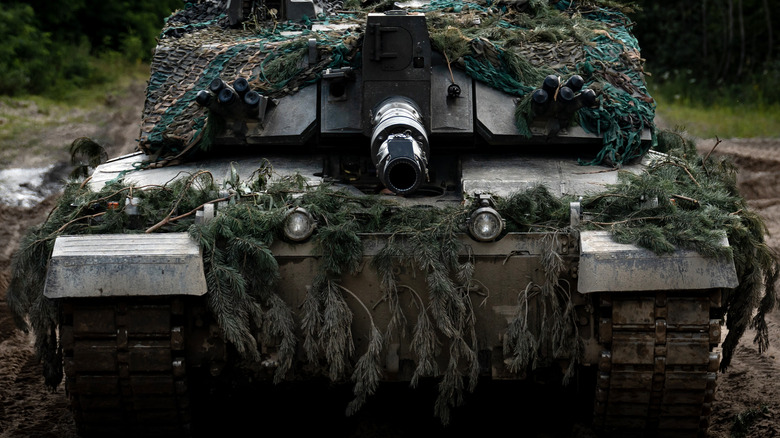
Global Images Ukraine/Getty Images
The Challenger 2 is the U.K. equivalent of the third-generation main battle tanks of other nations, such as the M1 Abrams and Leopard 2. An evolution of the Challenger 1, it entered service in 1994 and features a range of advancements and upgrades compared to its predecessor. This includes a 120-millimeter L30 rifled gun, a 37-mile-per-hour top speed, and a maximum range of 340 miles. Combined with its unique Dorchester 2 armor and two 7.62-millimeter chain guns, the tank sacrifices speed and agility in exchange for lethality and protection.
Production began in 1990 and the tank was first used by the British Army in 1998, continuing to this day until the vehicles are upgraded to the Challenger 3 model as part of a wide retrofit and upgrade to the army’s tanks. Over 400 of the Challenger 2s have entered service, with Oman also using the Challenger II as its main battle tank. Before several Challenger 2 tanks were sent to Ukraine in 2023, the tank had a reputation for being invincible as none had ever been lost to enemy fire.
The exact costs for the Challenger 2 have never been officially confirmed by the British government. However, reports suggest that it came at a cost of between £4 million and £4.2 million, roughly equivalent to around $5 million.
K2 Black Panther – $8.5 million
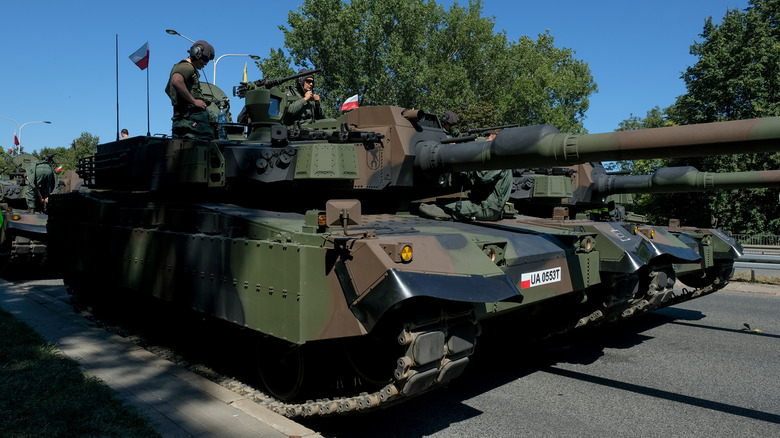
Bloomberg/Getty Images
The K2 Black Panther may not be as instantly recognizable as some of the other tanks you may have seen, but that doesn’t mean it isn’t effective and lethal. It is a South Korean main battle tank that entered service in 2014 following more than a decade of design and development. The vehicle was designed for high-speed scenarios and to make use of network-centric operations to collect and share information across military forces. This includes a KSTAM-II system that can auto-target enemies and an advanced fire control system from French company Leclerc that can acquire enemy units from up to six miles away.
Combined with its autoloading 120-millimeter L/55 smoothbore gun and a Tognum MT 833 diesel engine, the K2 Black Panther is a powerful and maneuverable tank. Equally capable in urban or open environments thanks to its hydropneumatic suspension and a top speed of 42 miles per hour, the tank performs similarly to the M1 Abrams in most scenarios. Its success has led to it being exported to Poland and the K2 Black Panther is also the basis for Turkey’s Altay main battle tank. Other nations, such as Egypt and Romania, have both signaled intentions to import the tank.
The K2 Black Panther is off

